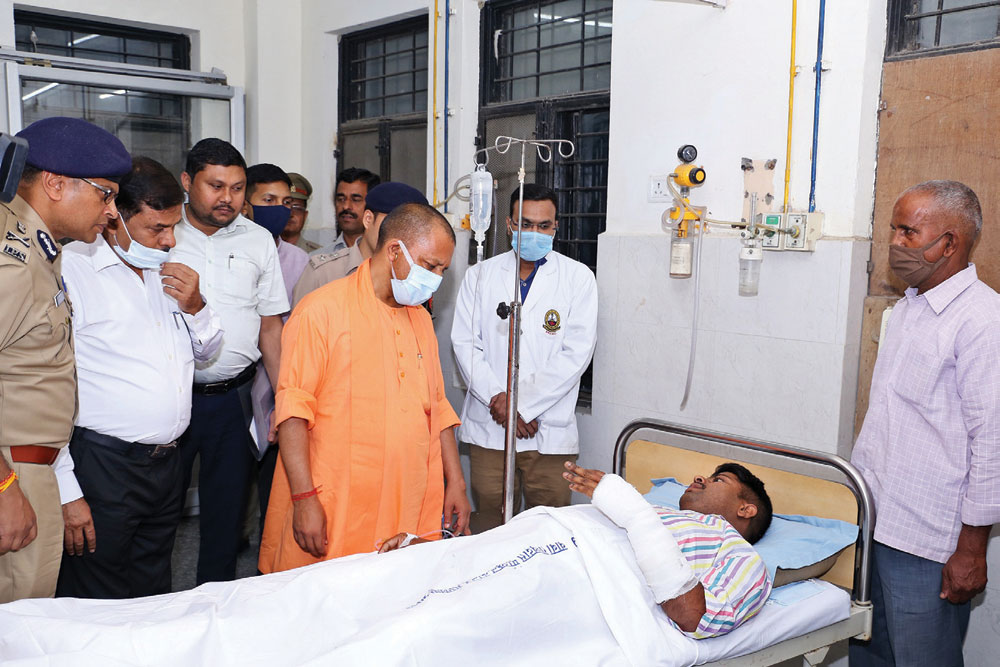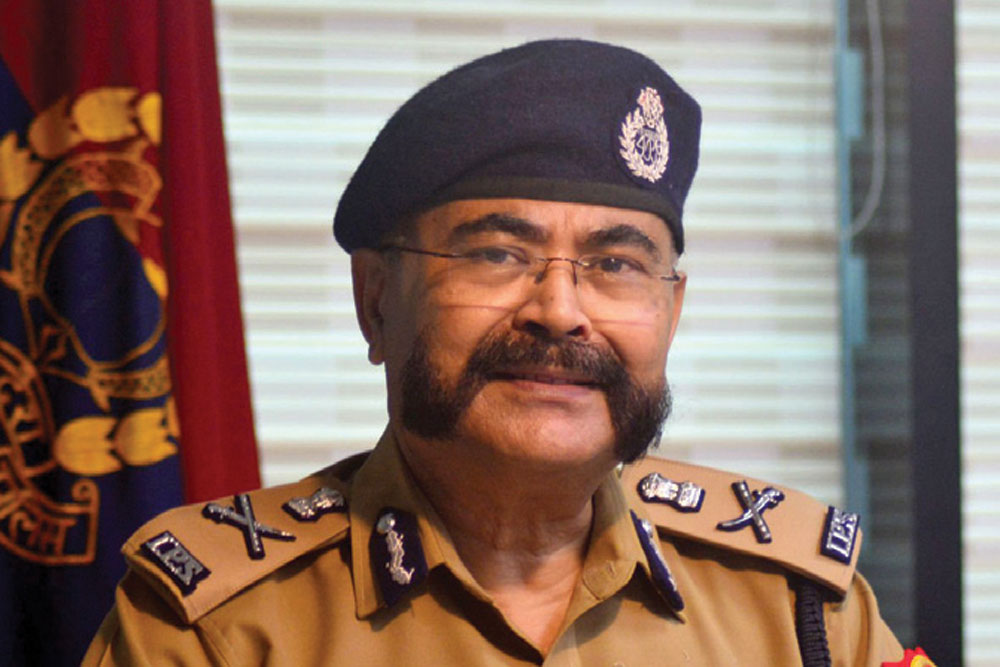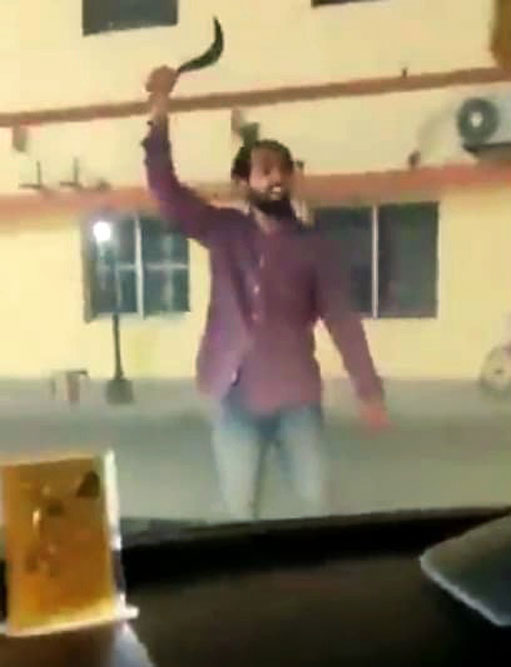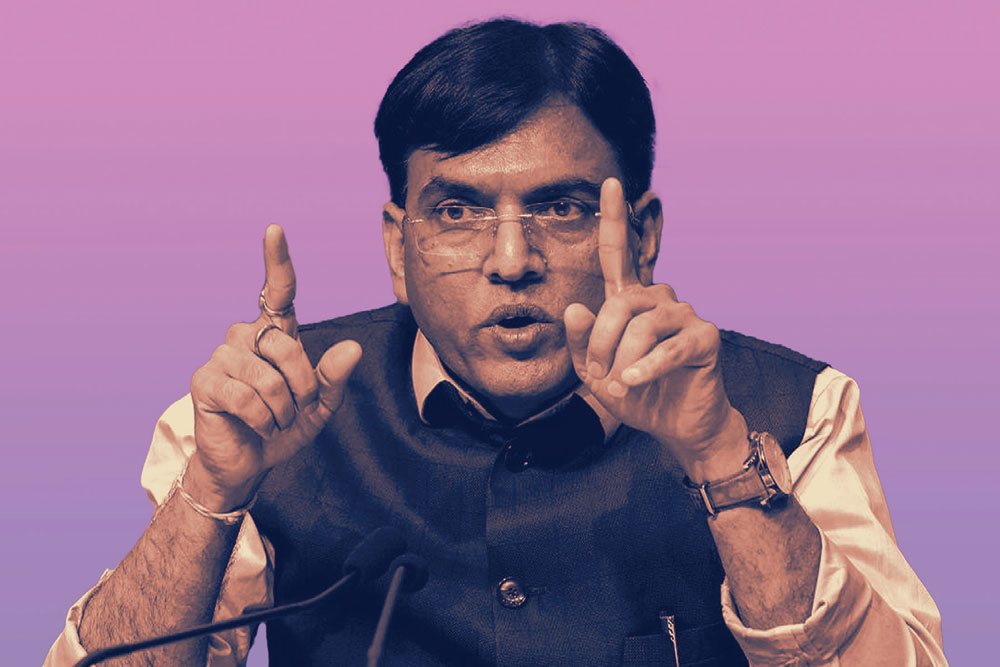The Gorakhpur Warning
The evidence of radicalisation behind the Gorakhnath temple attack poses a new security challenge for the Adityanath government
 Rajeev Deshpande
Rajeev Deshpande
 Rajeev Deshpande
Rajeev Deshpande
 |
15 Apr, 2022
|
15 Apr, 2022
/wp-content/uploads/2022/04/Gorakhpur1.jpg)
Security at the Gorakhnath temple in the aftermath of the April 3, 2022 attack
On the night of Sunday, April 3, a slightly built young man took Provincial Armed Constabulary jawans Gopal Gaur and Anil Paswan by surprise, slashing at them with a razor-sharp sickle he had hidden under his clothes as he tried to barge into the premises of the famous Gorakhnath temple, the spiritual seat of the Nath sampradaya (tradition). Recovering from their initial shock, the jawans quickly fought back and held the attacker who was shouting religious slogans even as they suffered serious injuries from the frenzied assault. Another jawan, on traffic duty nearby, said that the man had kept the weapon out of sight as he tried to push his way into the temple when challenged by the guards.
After the assailant was taken to Gorakhpur’s BRD hospital for treating an injury to his hand, news of the sensational attack spread fast. Senior Uttar Pradesh (UP) Police officers heaved a sigh of relief that the man had been apprehended at the outer perimeter of the temple itself but were soon intrigued as details of the attacker, identified as Murtaza Abbasi, became known. A chemical engineering graduate from IIT Mumbai, who successfully finished his degree in 2015, Abbasi hails from a family with roots in Gorakhpur but which had long settled in Mumbai where he completed his schooling before IIT. The implications of a likely security breach at the Gorakhnath temple, the spiritual head of which is UP Chief Minister Yogi Adityanath, were evident enough: injuries to devotees or temple employees would have caused widespread outrage. The likely objective was to raise communal tensions and instigate violence, investigators deduced after their initial questioning of Abbasi. Coming as it did soon after the Adityanath government returned to office with a large majority, the incident was a warning of fresh security challenges that awaited the chief minister after an election wherein his claims to improved law and order and his criticism of the rival Samajwadi Party (SP) for being “soft on terror” had found purchase with voters.
The incident predictably attracted wide attention—and contending claims. Abbasi’s mental health was soon a matter of discussion, with suggestions that he might be unbalanced. SP chief Akhilesh Yadav waded into the controversy, saying that as per information, buttressed by the remarks of the attacker’s father, Abbasi might be mentally unstable. The Bharatiya Janata Party (BJP) state chief, Swatantra Dev Singh, countered by asking Yadav to send a list of patients who might be likely terrorists. In the days following the incident, Abbasi’s father Muneer Ahmed gave several statements, including claims that his son was subjected to ragging at IIT Mumbai and was depressed. Senior police officials said any such claim would be examined by a medical panel as per procedures. They added that Abbasi had wielded a sharp weapon with murderous intent and shouted religious slogans, raising strong suspicions about the jihadist nature of the attack. In the course of the investigation, Abbasi was found to be bright and talkative when he wanted. This would sometimes alternate with periods when he would be withdrawn, reluctant to share information about his motives and movements over the past few months. Having once worked with two major Indian petrochemical companies (he lived in Jamnagar for a while), he had been unemployed for some time. Just prior to reaching Gorakhpur, Abbasi was in Nepal from where he had made some fund transfers to accounts in the Gulf. His electronic devices are being examined by forensic experts but the initial material recovered points to a highly radicalised individual, who seemed to harbour deep grievances about alleged sufferings of the Muslim community. Worryingly, evidence also suggested that he was actively radicalising youth through WhatsApp groups, often asking individuals to carry out recces of prominent temples and make maps. A senior police official said it was fortuitous that Abbasi had been captured, allowing investigators to probe his associations and track physical movements. “If he had died in the course of the attack, it would have been a dead end and there would have been a barrage of claims and counter-claims,” said an officer.
Officers probing the attack are cautious about commenting on any cross-border links after reports that Abbasi might have been following instructions of a handler. They point out that it was not difficult for a tech-savvy person to access jihadist literature and becoming a member of groups where such propaganda was circulated. An unverified video, possibly recorded by the Anti-Terrorism Squad (ATS) soon after he was apprehended, shows Abbasi expressing his anger and resentment over the Citizenship (Amendment) Act, or CAA, and the National Register of Citizens (NRC)—issues that had sparked protests and even riots like the violence in northeast Delhi in early 2020. His monetary contributions to certain organisations in the Middle East and social media activity are being evaluated to assess whether he was a ‘lone wolf’ operator or had connections with radical groups. The nature of the attack and the target selected has led UP Police to see the happenings at Gorakhpur as a terror incident with a senior official saying that elaborate security plans—put in place keeping in mind that terror outfits will eye ‘high-value’ targets—had prevented a more serious breach. Several intriguing threads about Abbasi’s motives, and what caused his turn to radicalism, have seen the court grant the police extended custody which might now come to an end even as UP Police have despatched teams to cities he visited recently before showing up at the Gorakhnath temple in an auto he had hailed. Details of his Nepal sojourn are also being probed for the individuals he met and just how and why he planned the trip ahead of returning to India.

While Abbasi does not seem to have been particularly sociable, his former wife Shadma’s comments to television channels throw some light on the austere nature of life at the household she was briefly part of. According to Shadma, who returned to her family after her marriage to Abbasi fell apart, her former husband kept to himself and they barely spent time together. He seemed considerably under the influence of his mother and most of Shadma’s interaction with Abbasi was in the presence of family members. He did not bring his laptop or phone to their room. Soon after the marriage, it became evident that the Abbasi family expected Shadma to follow conservative norms. “They expected compliance with purdah…that was not my background. They wanted a simple person who was not interested in anything,” she told a TV channel. It does appear that his increasing radicalisation might have made him more of a loner, and made it difficult to hold on to jobs that he initially got after finishing his BTech degree. His preoccupation with religious identity and a deepening resentment over alleged wrongs seemed to have weighed heavily on his mind, reinforced by the orthodox and somewhat austere atmosphere in his family home. The recovery of radical videos from his electronic devices, with some linked to the Islamic State (IS) propaganda material, indicates that he was busy imbibing what is seen as a call to action while also speaking of his convictions to others whom he sought to influence in closed groups on social media platforms.

The political exchange over the incident has followed the polarised nature of the election campaign, with SP suggesting that the attack’s seriousness was being exaggerated and BJP in turn accusing the opposition party of downplaying a terror attack to promote its appeasement politics. As recent clashes in some states where Ramnavami celebrations were attacked clearly underline, the political and communal divide can run deep and incidents like the one at Gorakhpur can well tip emotions over. The investigators remain careful about naming any particular agency, even as speculation of a cross-border link does the rounds, as they feel the source of Abbasi’s radicalisation need not have physical coordinates. Jihadist groups are adroit in using technology to disseminate incendiary material even as they cover their tracks. India has seen several individuals head for Syria and Iraq when IS was in control of a geographical territory and there were cases of families with young children heading to Afghanistan in a bid to reach the ‘liberated’ areas under IS. Till recently, India was struggling to find means to repatriate women left behind in Afghanistan by husbands who headed for IS territory never to return. In their interviews, some of the women came across as radicalised themselves, posing a dilemma for security agencies even as their families in India demanded they be brought back. The establishment of Taliban rule in Afghanistan has raised fears that the new ‘emirate’ is sure to become a beacon for radicalisation and encourage and embolden individuals and groups who see their version of Islamic rule as a throwback to an ideal seventh century religious order.
The materials recovered from the assailant indicate that this was a serious and big conspiracy. We cannot deny or rule out the possibility that this was a terrorist act. A team of the Anti-Terrorism Squad is thoroughly investigating the matter,” says Prashant Kumar ADG (Law and Order), UP Police
The Gorakhnath temple and other religious places like the Varanasi ghat and temple complex, as well as the under-construction Ram temple at Ayodhya, have been identified by UP Police as sensitive sites and likely targets. There are other religious and cultural sites on the list and the recent incident highlights the dangers of radicalisation in particular. The highly divisive and sometimes violent debates on hijab, halal meat and now clashes over Ramnavami processions provide fissile material for communal mobilisation. Serving and retired police officers point to a coordinated pattern by which certain groups seek to exploit such faultlines by preying on insecurities, fanning narratives of minorities being ‘second-class’ citizens. The emergence of organisations like the Campus Front of India in the hijab row is seen as part of a template that saw such outfits stir up passions against the CAA, alleging that the law was a conspiracy to deprive Muslims of their citizenship.

Abbasi will not be the first well-educated person or one with a technology background to turn towards jihadist thought, even though being an IIT graduate sets him apart. In the past, the Indian Mujahideen (IM), which struck terror across several states for months between 2007 and 2013 before a breakthrough by Gujarat Police led to the Centre launching a successful crackdown on the group, also had among its members Pune IT professional Mansoor Peerbhoy who used to hack Wi-Fi networks to send emails claiming credit on behalf of IM after each blast. Internationally, there are several famous examples like Mohamed Atta, who led the 9/11 strikes, and was an architecture and engineering graduate from Cairo university, or Al Qaeda leader Ayman al-Zawahiri who is a trained medical doctor. Some Islamists like Zawahiri were attracted to conservative political movements at an early age, while others became radicalised later in their lives. Abbasi is hardly in this league and is far from being a religious scholar. But he appears to have imbibed the extremist elements of religious propaganda that calls for the establishment of an Islamic theocracy, by violence if necessary, and sanctions attacks on targets like the Gorakhnath temple as part of a follower’s duty. The insistent drum beats of IS videos that claim to highlight atrocities against Muslims in various parts of the world have, as the Indian experience suggests, often served to push impressionable minds to violent action.
Murtaza Abbasi will not be the first person with a technology background to turn towards jihadist thought. He appears to have imbibed religious propaganda that calls for the establishment of an Islamic theocracy, by violence if necessary
UP Police will finalise its chargesheet against Abbasi once its investigations in other states and in Nepal are over. The current custodial interrogation of the accused will end on April 16, and the police are debating whether to seek another extension. If they do not, Abbasi will be moved to judicial custody. It is likely that he will face the anti-terrorism provisions of laws like the Unlawful Activities (Prevention) Act as the police have held the incident to be a terror attack. In any event, he is in for a long stay in jail and a lengthy legal battle while the fact that he was captured red-handed diminishes prospects of bail. The unfortunate turn in the IIT graduate’s life is a cautionary tale about how a promising career can lose its way in a labyrinth of hatred.

/wp-content/uploads/2025/06/Cover-OpenMinds2025.jpg)












More Columns
Armed with ILO data, India will seek inclusion of social security in FTAs Rajeev Deshpande
Elon Musk Returns to Rebellion Mode Against Trump Open
Without govt aid, Musk will have to head back home to South Africa: Trump Open